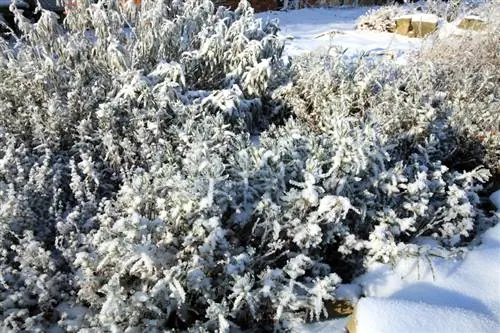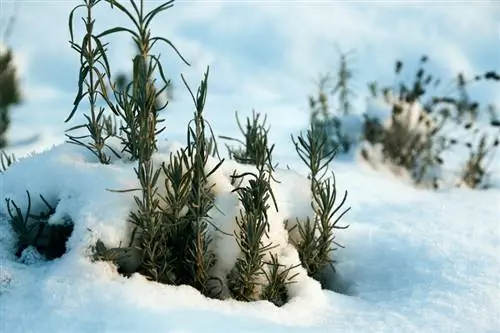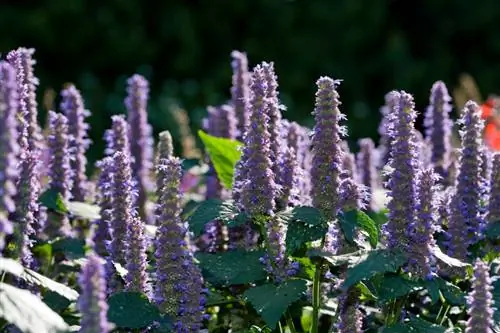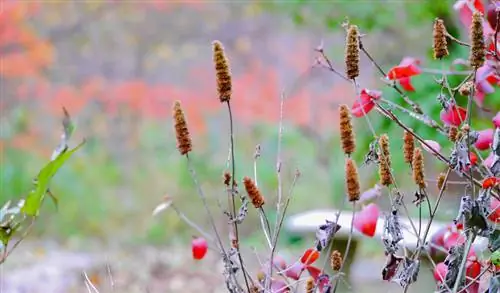- Author admin [email protected].
- Public 2023-12-16 16:46.
- Last modified 2025-01-23 11:20.
Hyssop comes from the south and feels comfortable in a full sun spot. Its frost resistance has allowed it to establish itself in the Central European climate. Hyssop was already valued as a medicinal and spice herb in the Middle Ages.
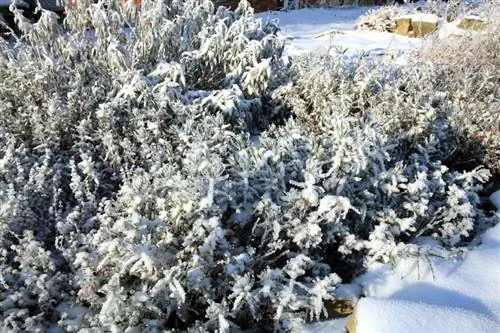
Is hyssop hardy?
Hyssop (Hyssopus officinalis) is hardy and can be grown in the garden or in a pot on the balcony. For optimal winter protection, older branches should be cut after flowering in August or left until spring. Potted plants need additional frost protection.
Hyssop is also called verbena or beeweed as well as vinegar, wine aspen or St. Joseph's wort. Its botanical name is Hyssopus officinalis and is one of the mint family. Hyssop is widespread from southern Europe to western Asia. It grows as a subshrub on dry, stony soils. Hyssop blooms in strong blue from June to October. The flowers exude an intense, spicy scent that attracts all kinds of insects.
Hyssop in the garden
Growing hyssop in the garden is not difficult. It only needs a few things to thrive, including:
- sunny, wind-protected location,
- calcareous, permeable soil,
- regular cut.
Other care measures, such as: B. frequent watering or fertilizing are not necessary. Pruning is carried out immediately after flowering. The best time for this is August so that the plant can recover until the onset of winter. If you have missed this point, it is better to wait until spring to prune. In very cold winters, the old branches offer sufficient winter protection. In very mild winters these remain green. The cut is then carried out before new growth in March.
Hyssop on the balcony
To grow Hyssopus officinalis on the balcony, you need a sufficiently spacious container, as the plant develops into a bush approx. 30-60 cm tall over time. In terms of location and care, the same rules apply as for outdoor cultivation. However, the potted plants - especially the young plants - should be given suitable protection in the event of permanent frost.
Tip
The easiest way to propagate hyssop is through seeds, which you can buy at a low price from specialist retailers everywhere. The only thing to note is that the seeds germinate in light.

